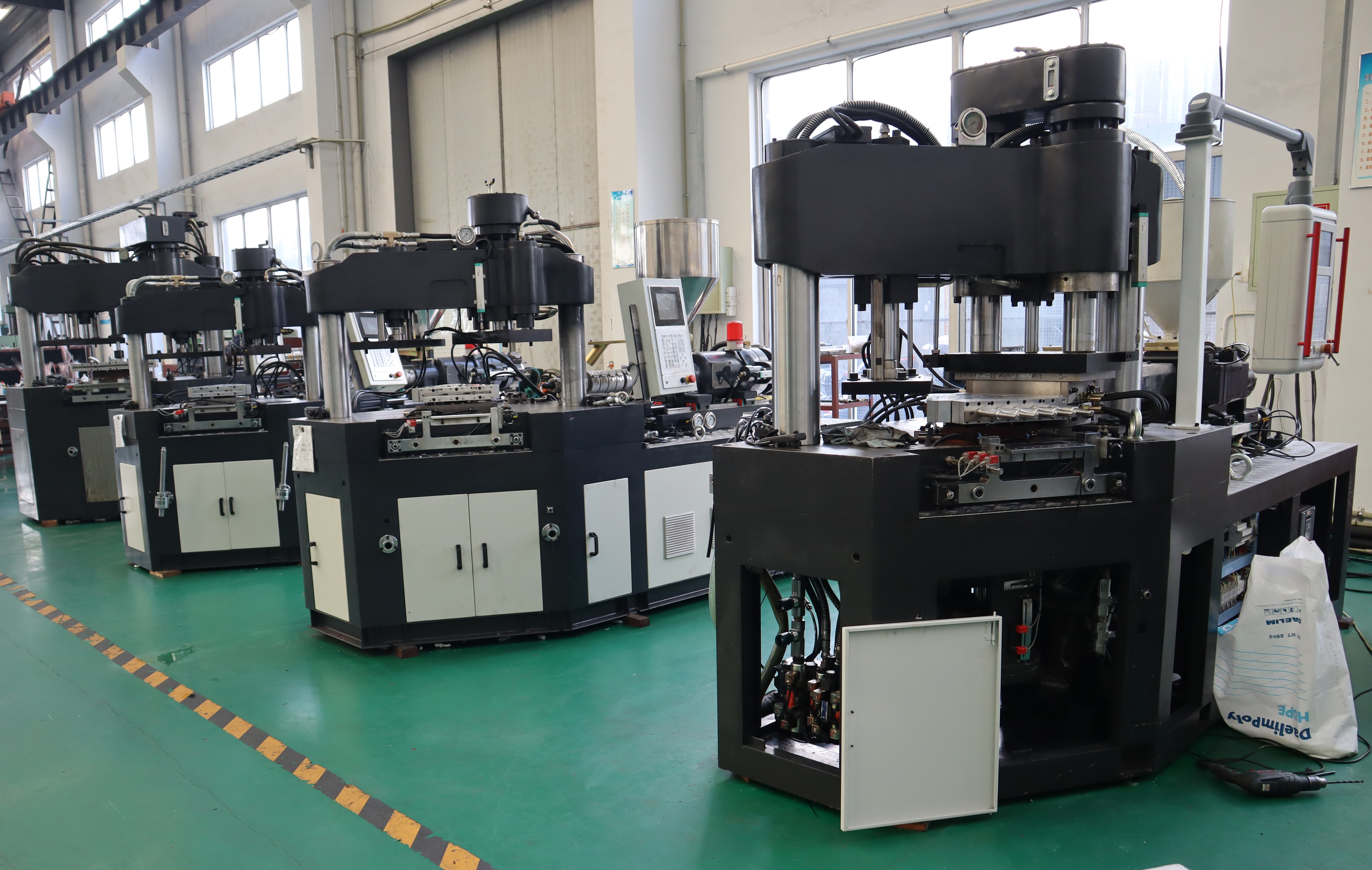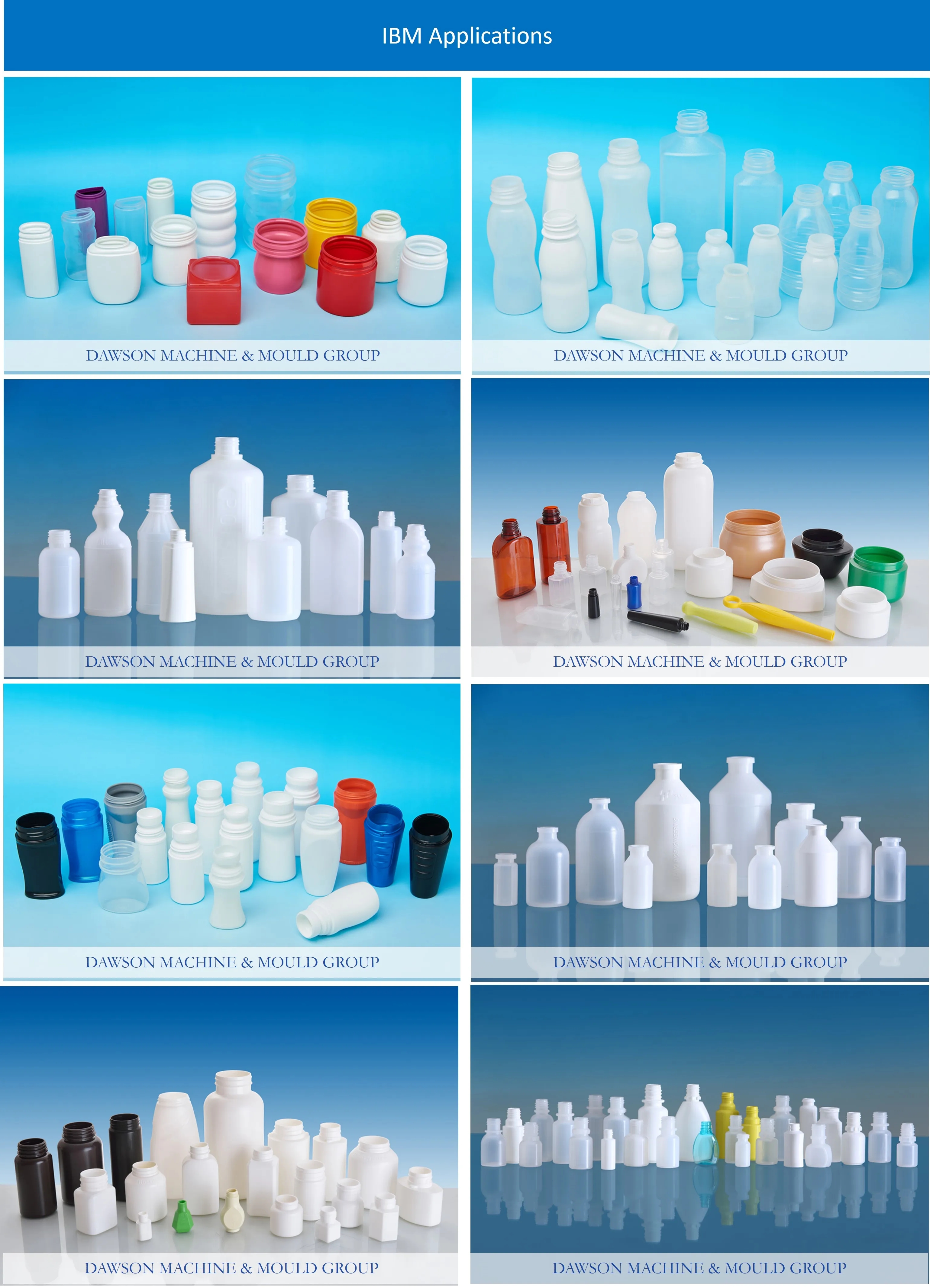- All
- Product Name
- Product Keyword
- Product Model
- Product Summary
- Product Description
- Multi Field Search
| Place of Origin: | |
|---|---|
| Condition: | |
| Plastic Type: | |
| Application: | |
| Availability: | |
| Quantity: | |
IBM35
Dawson
8477101090
High speed HDPE LDPE Ketchup bottle for injection blow molding machine
DESCRIPTION
Advantage
 | Bottles, those ubiquitous containers designed to securely hold both liquid and solid substances, are an integral part of our daily existence. They are omnipresent, whether it's the small, precisely - designed medicine bottles that safeguard our health - related medications, the elegantly shaped cosmetics bottles that showcase beauty products, or the beverage bottles that satiate our thirst. From the pharmacy shelves to the vanity tables and the refrigerators in our kitchens, these bottles are a constant sight, catering to a wide range of our needs. The evolution of bottle materials has been nothing short of revolutionary, and this transformation is deeply intertwined with the meteoric rise of the petroleum industry. With the advent of high - molecular polymers, more commonly referred to as plastics, a new era in bottle manufacturing dawned. Before the emergence of plastics, bottles were predominantly crafted from either glass or ceramics. Glass offered transparency and chemical resistance but was relatively heavy and fragile. Ceramics, on the other hand, provided durability in certain applications but had limitations in terms of shape flexibility and mass - production capabilities. Plastics, however, brought a plethora of advantages. They were lightweight, which significantly reduced transportation costs. They were also highly adaptable, capable of being molded into an infinite variety of shapes, sizes, and colors, allowing for greater creativity in product design. |
Technical Parameter
| Model | |||||
| Item | Unit | Date | |||
| Injection system | Screw Diameter | mm | 40 | 45 | 50 |
| Max. Theoretical injection capacity | G | 176 | 260 | 314 | |
| Heating capacity | KW | 7.2 | 10 | 10 | |
| No. of heating area | Qty | 3 | 3 | 3 | |
| Clamping & blowing system | Clamping force of injection | kn | 350 | 450 | 650 |
| Clamping force of blowing | kn | 40 | 78 | 89 | |
| Opening stroke of mold platen | mm | 120 | 120 | 140 | |
| Max. Platen size (L×W) | mm | 420×340 | 560×390 | 740×390 | |
| Min. Mold thickness (H) | mm | 180 | 240 | 280 | |
| Heating capacity of mould | KW | 2.8 | 4.0 | 5.0 | |
| Product dimension range | Suitable bottle range | ml | 3-800 | 3-800 | 5-800 |
| Max. bottle height | mm | ≤180 | ≤200 | ≤200 | |
| Max. Dia. of bottle | mm | ≤80 | ≤80 | ≤80 | |
| Dry cycle | s | 4 | |||
| Hydraulic driving system | Motor power | KW | 11/15 | 18.7/22 | 17 |
| hydraulic pressure | Mpa | 14 | 14 | 14 | |
| Pneumatic system | Min. Air pressure | Mpa | ≥0.8 | 1.0 | 1.0 |
| Discharge rate of compressed air | M3/mm | ≥0.7 | ≥0.8 | ≥0.8 | |
| Cooling system | Water flowage | M3/h | 3 | 3 | 4 |
| Total rated power with mold heating | KW | 21/25 | 34/38 | 45 | |
| Machine information | Dimension | M | 3.1×1.2×2.2 | 3.5×1.4×2.3 | 4×1.28×2.35 |
| machine weight | Ton | 4.0 | 6.0 | 7.5 | |
Application

High speed HDPE LDPE Ketchup bottle for injection blow molding machine
DESCRIPTION
Advantage
 | Bottles, those ubiquitous containers designed to securely hold both liquid and solid substances, are an integral part of our daily existence. They are omnipresent, whether it's the small, precisely - designed medicine bottles that safeguard our health - related medications, the elegantly shaped cosmetics bottles that showcase beauty products, or the beverage bottles that satiate our thirst. From the pharmacy shelves to the vanity tables and the refrigerators in our kitchens, these bottles are a constant sight, catering to a wide range of our needs. The evolution of bottle materials has been nothing short of revolutionary, and this transformation is deeply intertwined with the meteoric rise of the petroleum industry. With the advent of high - molecular polymers, more commonly referred to as plastics, a new era in bottle manufacturing dawned. Before the emergence of plastics, bottles were predominantly crafted from either glass or ceramics. Glass offered transparency and chemical resistance but was relatively heavy and fragile. Ceramics, on the other hand, provided durability in certain applications but had limitations in terms of shape flexibility and mass - production capabilities. Plastics, however, brought a plethora of advantages. They were lightweight, which significantly reduced transportation costs. They were also highly adaptable, capable of being molded into an infinite variety of shapes, sizes, and colors, allowing for greater creativity in product design. |
Technical Parameter
| Model | |||||
| Item | Unit | Date | |||
| Injection system | Screw Diameter | mm | 40 | 45 | 50 |
| Max. Theoretical injection capacity | G | 176 | 260 | 314 | |
| Heating capacity | KW | 7.2 | 10 | 10 | |
| No. of heating area | Qty | 3 | 3 | 3 | |
| Clamping & blowing system | Clamping force of injection | kn | 350 | 450 | 650 |
| Clamping force of blowing | kn | 40 | 78 | 89 | |
| Opening stroke of mold platen | mm | 120 | 120 | 140 | |
| Max. Platen size (L×W) | mm | 420×340 | 560×390 | 740×390 | |
| Min. Mold thickness (H) | mm | 180 | 240 | 280 | |
| Heating capacity of mould | KW | 2.8 | 4.0 | 5.0 | |
| Product dimension range | Suitable bottle range | ml | 3-800 | 3-800 | 5-800 |
| Max. bottle height | mm | ≤180 | ≤200 | ≤200 | |
| Max. Dia. of bottle | mm | ≤80 | ≤80 | ≤80 | |
| Dry cycle | s | 4 | |||
| Hydraulic driving system | Motor power | KW | 11/15 | 18.7/22 | 17 |
| hydraulic pressure | Mpa | 14 | 14 | 14 | |
| Pneumatic system | Min. Air pressure | Mpa | ≥0.8 | 1.0 | 1.0 |
| Discharge rate of compressed air | M3/mm | ≥0.7 | ≥0.8 | ≥0.8 | |
| Cooling system | Water flowage | M3/h | 3 | 3 | 4 |
| Total rated power with mold heating | KW | 21/25 | 34/38 | 45 | |
| Machine information | Dimension | M | 3.1×1.2×2.2 | 3.5×1.4×2.3 | 4×1.28×2.35 |
| machine weight | Ton | 4.0 | 6.0 | 7.5 | |
Application
